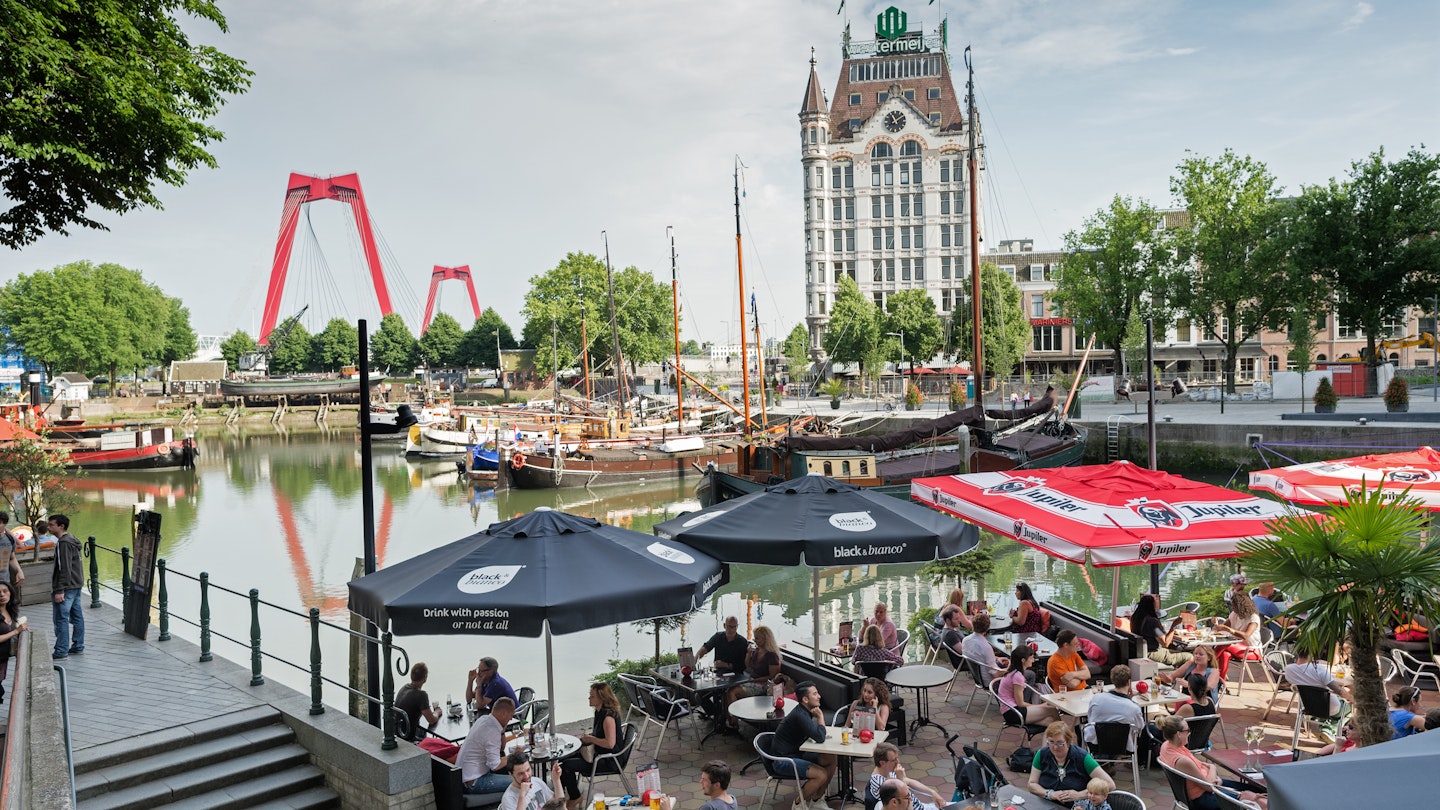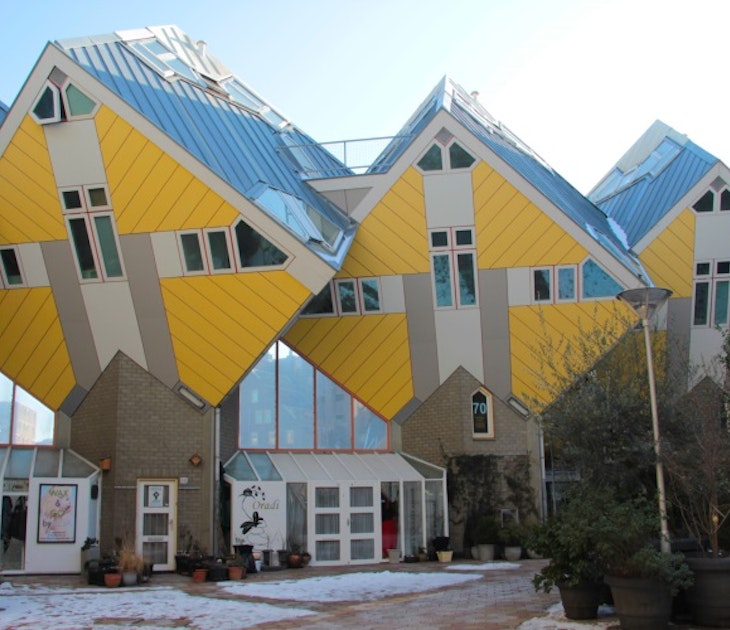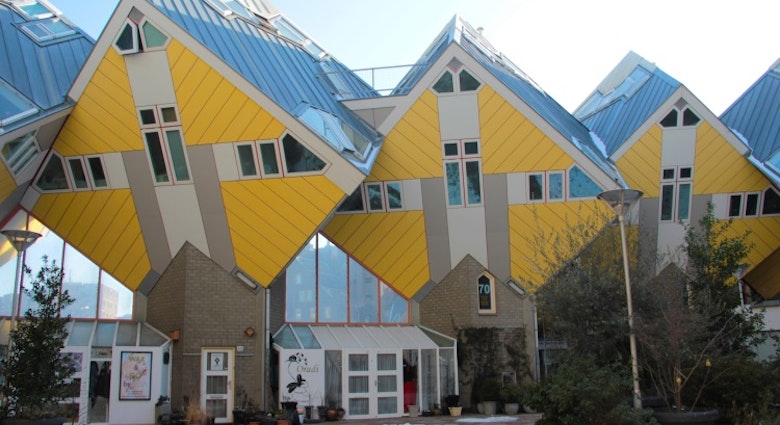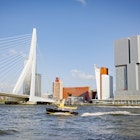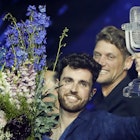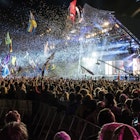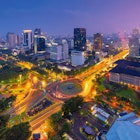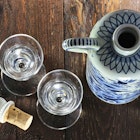Few European cities are as exhilarating as Rotterdam. Almost completely destroyed during WWII, its urban reconstruction has been a triumphant exercise in embracing innovation – the resulting architecture and urban planning have endowed its streets and neighbourhoods with a personality and energy that make it a great place to visit.
It’s also a must-see destination for those interested in cutting-edge design. Though compact, the city offers an extraordinary varied array of sights and experiences to keep the visitor busy, not to mention a wealth of trendy spots to grab a drink or something to eat.
Here are the best things to do in Rotterdam.
Grab a global snack at the Markthal
The visual heart of this city is as surprising as it is beloved. Opened in 2014, the Markthal in Centrum is a unique contemporary take on the traditional Dutch market hall. Designed by local architectural firm MVRDV, the building is in the form of a slightly bulbous arch framed on each end by floor-to-ceiling walls of glass.
Inside, a massive ceiling mural by artists Arno Coenen and Iris Roskam arcs over the hall’s produce stalls, fast-food stands and eateries. Its subject matter – a colourful cornucopia of food, flowers and insects – references 17th-century Dutch still-life paintings. Head here at lunchtime, when the fast-food stands that cram the ground floor serve a huge array of global cuisine.
Admire the Overblaak Development
East of the Markthal, across the paved plaza, is the Overblaak Development, a vibrantly hued, crazily tilting residential creation featuring a pencil-shaped tower and a forest of 38-cube-shaped apartments on hexagonal pylons. Designed by Dutch architect Piet Blom and built between 1978 and 1984, it’s perhaps the most distinctive building in a city where architectural distinction is the rule rather than the exception.

Go behind the scenes at Depot Boijmans Van Beuningen
When Rotterdam’s pre-eminent art gallery, the Museum Boijmans Van Beuningen, closed for major renovations in 2019, the question of what to do with its 151,000 artworks during the closure arose. Should they be put into a storage depot? Or perhaps loaned out to other institutions in travelling exhibitions?
Both are tried and true solutions, but here in Rotterdam, another possibility was raised – a new state-of-the-art storage depot next to the museum, publicly accessible so that its treasures could continue to delight visitors while the museum itself was closed.
In November 2021, the new Depot Boijmans Van Beuningen opened to the public. Housed in an extraordinary building designed by acclaimed local firm MVRDV of Markthal fame, the depot takes the form of a bowl-shaped building clad in mirrored glass. It has seven levels, a central 115ft-high (35m) atrium, a roof garden planted with trees and an upper-floor restaurant.
Feast on Tante Nel’s famous friet
Ask any Rotterdammer what their favourite fast food is and the answer will almost inevitably be Tante Nel’s friet. Serving the local version of French fries from its hybrid snack shack and bar in Centrum, Aunt Nel serves friet that are hand-cut and expertly fried, best eaten with met (mayonnaise) or doused in stoofviees (a rich meat stew). The bitterballen (Dutch meatballs) are pretty good, too.
Order your snack and a drink inside and then enjoy your choice on one of the tables on the front terrace. It’s particularly busy late at night, as eating friet here is a popular pastime after drinking sessions at nearby Bokaal, one of the city’s most popular bars.
Marvel at the modernist Van Nelle Fabriek
One of only 11 World Heritage–listed cultural sights in the Netherlands, this concrete, steel and glass factory on the banks of a canal northwest of Centrum is a modernist masterpiece. Conceived by architects Johannes Brinkman and Leendert van der Vlugt as an ‘ideal factory,’ where interior working spaces evolved according to need and where daylight was maximised to provide healthy and enjoyable working conditions, it became a powerful symbol of European modernity when it opened in 1931.
Today it houses event spaces and creative industries. Local company Urban Guides conducts one-hour group or customised tours of the factory and other architectural wonders throughout the city on weekends – check its website for details.
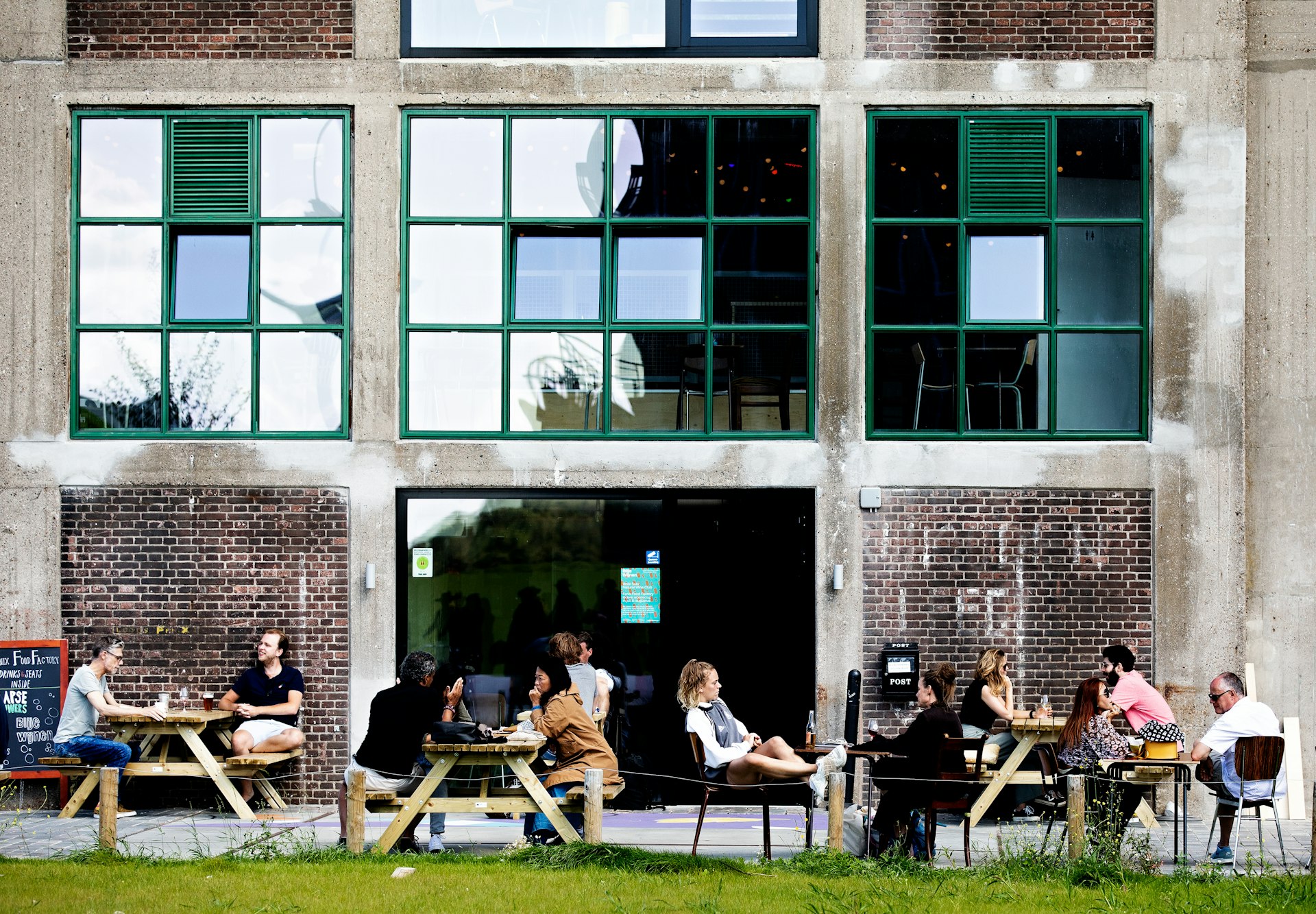
Enjoy a tipple at a local microbrewery
When it comes to beer, Rotterdammers clearly believe that small producers are best. Microbreweries are scattered throughout the city, with concentrations in avant-garde Noord, the neighbourhood northeast of Centraal Station. Here, popular venues such as Brouwerij Noordt and Eurotrash United offer patrons both standard and seasonal brews.
Heading west, drinkers sit amidst burnished copper vats and are seduced by the heady aroma of hops and the delicious flavours of the signature Mayflower Tripel at Stadsbrouwerij De Pelgrim, an atmospheric brewhouse in historic Delfshaven. South of Centrum, in the former red-light district of Katendrecht, the popular Fenix Food Factory overlooking the Maas River is home to artisanal food and drink stalls including the taproom of Kaapse Brouwers, a hipster outfit producing more than 20 craft beers.
Learn about the wartime experience at Museum Rotterdam 1940-1945 NU
Few cities were as disastrously impacted by WWII as Rotterdam. In a bunker-like building tucked under a bridge on Coolhaven, this small but excellent museum documents life in the city during the war years. The centerpiece is an immersive multimedia experience outlining the terror and destruction that was caused on 14 May 1940, when 54 German aircraft dropped 1300 bombs on the city over a 13-minute period, killing more than 900 people, destroying buildings and setting off a firestorm that levelled the medieval city centre and many other neighborhoods.
Other exhibits highlight the Nazis' unconscionable treatment of Rotterdam’s Jewish community under the occupation, the valiant contribution of local resistance fighters and the joyous liberation of the city by Canadian troops on 8 May 1945.
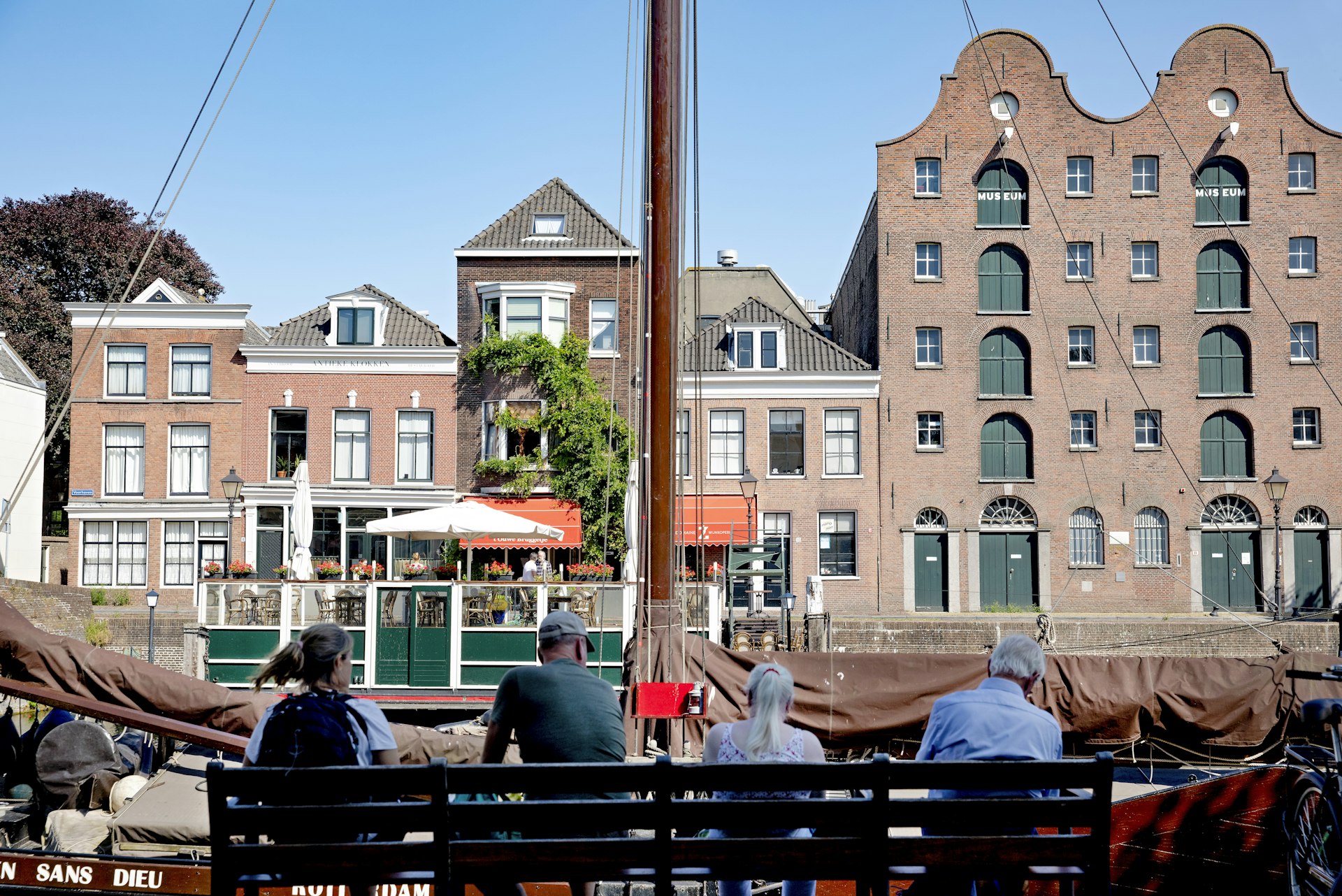
Stroll the historic streets of Delfshaven
Be sure to wander along the pretty-as-a-picture streets and canals in historic Delfshaven, one of the few neighbourhoods in Rotterdam to be spared in the 1940 bombings. While here, pop in for a drink at one of the neighbourhood’s famous bruin cafés (traditional Dutch pubs).
Embrace third-wave coffee culture
This is a city that takes its coffee seriously. A craze kick-started with the opening of local coffee roaster Man Met Bril in 2012, cafes across town now serve coffee made with fair-trade, single-origin beans that are freshly roasted by local suppliers. Be it espresso, AeroPress, drip, French press or cold brew, you’ll have no trouble sourcing a cup to your liking and enjoying it in casual but stylish surrounds.
Our favourite cafes include the aforementioned Man Met Bril, located in a repurposed railway viaduct in the Noord neighbourhood; Hopper on Schiedamse Vest near Witte de Withstraat; and Urban Espresso Bar on the bustling Nieuwe Binnenwag strip. The latter two serve great food, too (don’t miss the house-baked pastries at Hopper).
Enjoy a gin in historic Schiedam
Back in Holland’s Golden Age, the town of Schiedam was known for its jenever, a spirit combining distilled malt wine and juniper berries that's considered the forerunner of gin. Popularised around the globe courtesy of the crews of Dutch East India Company ships, who were fervent admirers of its fortifying qualities, it was also popular with the Dutch soldiers who fought alongside English and Scottish troops in 17th-century wars and whose jenever-fuelled fortitude under fire came to be called ‘Dutch courage’ by their allies.
These days, the history of picturesque Schiedam and its jenever industry is explained at the Nationaal Jenevermuseum located in the center of the town’s historic distillery district. After visiting, you can sample the stuff itself at one of the bars on picturesque Grote Markt in the historic centre. It’s easy to get to Schiedam, just take the metro (Line A or B) from Rotterdam Centraal to Schiedam Centrum.
Admire the majestic De Rotterdam building
In a city replete with architectural masterworks, the interconnected stack of glass and steel boxes forming the De Rotterdam complex stands out for its size, audacity and sheer virtuosity. Designed by local firm OMA, which is headed by star architect Rem Koolhaas, this vertical city is the visual lynchpin of Kop van Zuid, the revitalised former port area south of the Nieuwe Maas shipping channel.
Though Kop van Zuid can be accessed via tram and metro (Wilhelminaplein station), the best way to get here is by walking or cycling across the Erasmusbrug, a stunning pylon bridge fondly dubbed ‘the Swan’ by locals. At sunset, when De Rotterdam’s lights are first turned on, the building’s colossal exterior seems almost transparent and is a truly wonderful sight. But many would argue that the view from the nhow Hotel’s seventh-floor cocktail bar, which offers a panoramic sweep of the Erasmusbrug and city skyline, is even better.
Join the party on Witt de Withstraat
If there’s one art the locals have perfected, it’s outdoor eating and drinking. In fine weather the cafes, bars and eateries along Witt de Withstraat unfurl the street umbrellas over their street furniture, crank up their sound systems and welcome boisterous groups of Rotterdammers young and old.
If you join them, you’ll probably find yourself cheek-by-jowl with backpackers from nearby hostels, staff from the cultural institutions in Museumpark, office and retail workers from Centrum and those from other neighborhoods who know that this is where the best party in town takes place – every night into the wee hours. Our favourite watering holes include De Witt Aap at number 78 and Wunderbar, which is located just around the corner at Boomgaardsstraat 71.
Take a day trip to Kinderdijk
There’s so much to see and do in Rotterdam that it seems almost reprehensible to recommend a day trip out of the city. But Kinderdijk, an almost impossibly picturesque World Heritage-listed landscape of marshes, canals and historic traditional windmills located approximately 9.5 miles (15km) southeast of the city center, is worth making an exception for.
This quintessentially Dutch landscape is best explored by bicycle – hire one in Rotterdam (your accommodation should be able to help you with this) and then take it and yourself onto the number 202 waterbus ferry from the Erasmusbrug ferry terminal.
After a 30-minute journey, you can hop onto your bike and follow the dual pedestrian and cycle path between the canals, stopping to visit the two 17th-century windmills operating as museums as well as the visitor centre in the 19th-century pumping station. In summer, tall reeds line the canals, lily pads float on the water and birdcalls break the silence – it’s a truly magical experience.

